Sunbursts
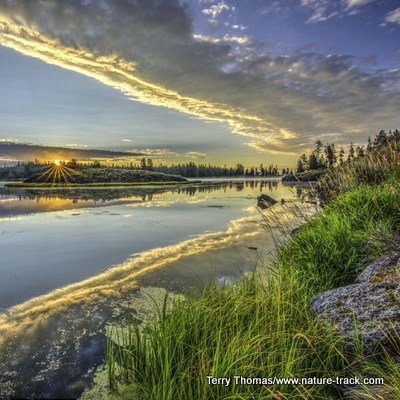
A sunburst is usually small in the frame but is really a focal point. A sunburst can add a surprising amount of drama and impact.
Sun bursts (also called starbursts) can really add a lot of drama to a scenic image. If you don’t know what a sun burst is, look at the image below. It is when the photographer can coax the sun’s brilliance to split into two, four or more distinct rays.
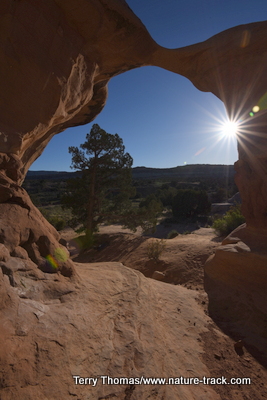
I have been playing around a bit with sun bursts to discover the secret to making this work. I am not expert at it yet and haven’t figured out all the nuances to making sun bursts consistently, but I will pass on what I know.
The first thing about creating a sunburst is to use a very small aperture. Having the diaphragm set to a tiny opening like f16 or even f22 is paramount to making a good sunburst. I don't really understand why, but I do know that it works.
Conventional wisdom says that to get an effective sun burst, the sun needs to be just peeking out from the edge of something: a tree, a rock, the horizon or something else. In most cases, a full orange ball or even half a ball just won’t work. There are exceptions which I will cover below.
Something else I have discovered is that the smaller the sun in the frame, the easier it is to get a sun burst. I have never been successful using a telephoto lens. Wide angle lenses seem to work the best.
In the captions to the images below, I will explain what I did to make the sun burst work or in some cases why I think it didn’t work.
HDR can really help as the underexposed frames will pick up the sun rays better. The normally exposed frames will blow out the sunlight in an effort to properly expose the rest of the image. When you combine them though, you get the best of both ends. That is the exact purpose of HDR. If you are not familiar with HDR, which stands for High Dynamic Range, I will refer you to my blog on that subject in Photography Classroom.
I have found that if the sun is just above the horizon and I am using a wide angle lens, I actually get the best sun bursts. This is particularly true when creating an HDR image. Often, the top of the sun is too over exposed (blown out) for detail, but the bottom rays are terrific. High Dynamic Range with at least three stops in between (five is better) can even help with that.
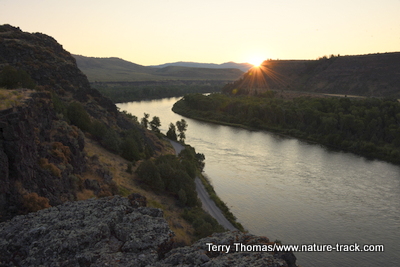
The sunburst in this image looks great on the bottom, but the top is washed out from overexposure required to get detail in the foreground.
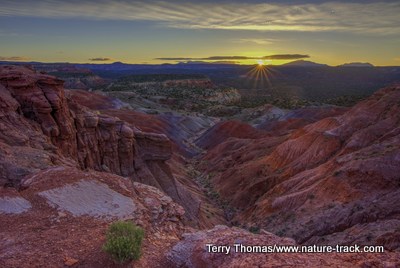
Without using three images with different (bracketed) exposures, the sunburst in this image would probably be washed out.
Every surface creates the potential for flare so take off your filters if possible. Also make sure front element is clean as the sunlight will highlight every speck of dust. Also, when the sun is tiny in the frame and weak enough that you can actually look at it as in the image above, there is usually less lens flare.
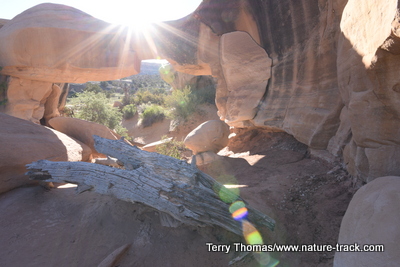
In this image, you can readily see each lens element as they reflect the direct light from the sun. Slight shifts in camera angle (I improved on this image by fractionally pointing the camera downward) and by removing unnecessary filters.
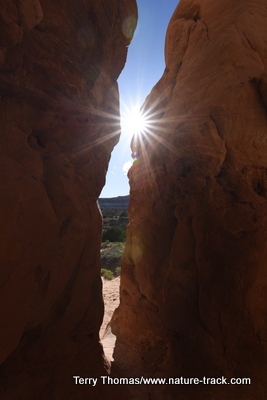
This is a good sunburst created during mid-afternoon, proving that this isn't just a technique for sunrise and sunset. However, you can see multiple spots are are either reflections off the filter, lens elements or dust on the lens. Make sure your glass is clean or you will spend unnecessary time with PhotoShop!
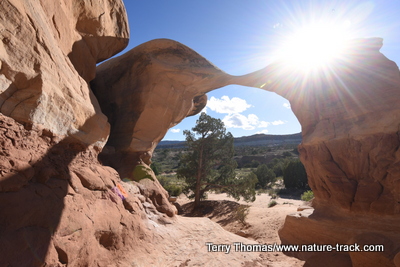
While this is a good sunburst, it is really overwhelming in the image. By hiding the sun just a bit more behind this arch at Devil's Garden in Utah's Grand Staircase-Escalante National Monument.
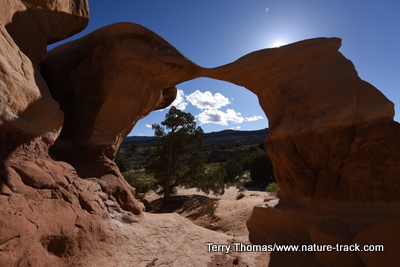
This image has the opposite problem. Not quite enough sun is peeking out to enable a sunburst to form.
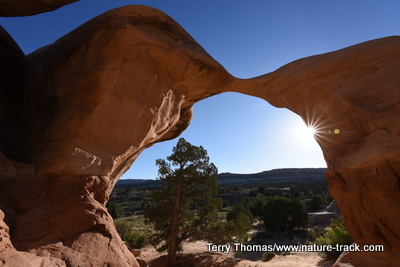
The sunburst here is much better. Although you can't tell in this image, if I darken the sky inside the arch a little, there are even sun rays there.
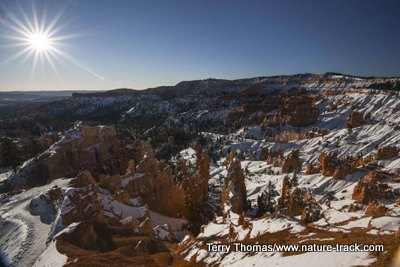
This is an image that seems to break all the rules. The sun is relatively large in the frame and it isn't partially hidden. I did shoot this at f-18 where usually I restrict my aperture to f-16 and perhaps that made the difference. I wish I would have bracketed the exposure and tried an HDR with this image, but I didn't.